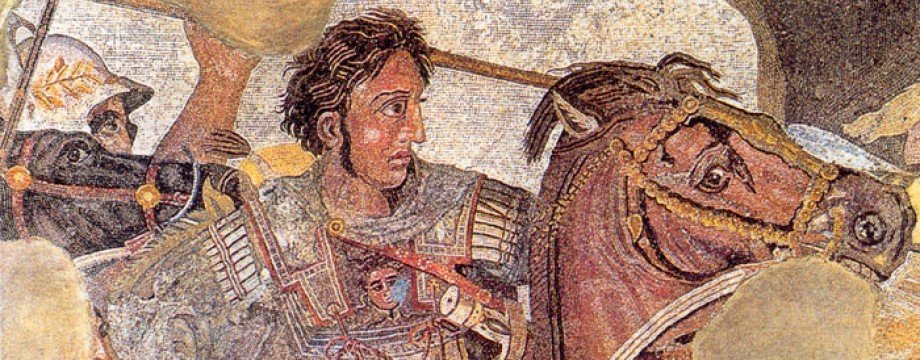Some more interesting search enquiries have led people to this blog. Here are answers to some of the questions.
“where is troy located?”
The ruins of Troy can be found near the Turkish city of Hisarlik (See Google Maps here). Several settlements have been built on the site of Homeric Troy (with the first dating to c. 3000 B.C. According to About, the Tojan War took place
… either at the time of the level known as Troy VI (1800-1275 BC) or Troy VII (1275-1100 BC).
Alexander cannot have been greatly impressed by Troy on the occasion of his visit in 334 B.C. The Landmark Arrian says that by his day it had become ‘a dusty tourist town’.
“what did diodorus say about babylon”
So far as Alexander is concerned, not a lot. The Macedonians’ arrival at Babylon is covered in XVII.64 of the Library of History. Diodorus describes the Babylonians as receiving Alexander ‘gladly’ and providing quarters and plenty of food to the Macedonian army. There was so much food that Alexander stayed in the city for a month before moving on to Susa. And that’s pretty much it.
There are a number of other references to Babylon scattered throughout Book 17:
- Chapter 31 Darius orders his forces to muster in Babylon before marching towards Issus (see the picture below)
- Chapter 39 Darius rushes back to Babylon after being defeated at Issus. There, he gathers the survivors of the first royal army together and writes to Alexander offering him part of his territory in return for ‘a treaty of friendship’
- Chapter 53 Darius leaves Babylon with his second royal army - it will eventually meet Alexander at Gaugamela.
- Chapter 64 Alexander’s arrival in Babylon, as mentioned above
- Chapter 65 After leaving Babylon, Alexander is met by reinforcements from Macedon.
- Chapter 71 Persepolis is so rich that Alexaner is obliged to send ‘for a vast number of mules from Babylon and Mesopotamia, as well as from Susa’ where the treasure was due to be sent to.
- Chapter 108 Alexander had given his friend Harpalus ‘custody of the treasury in Babylon’. Unfortunately, Harpalus abused that trust. Believing that Alexander would never return from India, he gave himself up to licentious living and ‘squandered much of the treasure under his control on incontinent pleasure’.
- Chapter 110 After Hephaestion’s death, Alexander ordered Perdiccas to take his body back to Babylon
- Chapter 112 Alexander did not immediately follow Hephaestion’s body back to Babylon. Instead, he launched a campaign against a mountain dwelling people called the Cossaeans. When he did finally set out for the city, he travelled ‘in easy stages, interrupting the march frequently and resting the army’. As he approached Babylon, some Chaldean priests warned him that the stars were portending his death if he entered the city. For a short while, Alexander heeded their warning and stayed outside. Finally, however, some Greek philosophers led by Anaxarchus, persuaded him to ignore the priests. He entered the city. Once again, he and the army were greeted ‘hospitably’ by the populace. The Macedonian soldiers ‘turned their attention to relaxation and pleasure’.
- Chapter 116 Alexander receives an omen of his death when a man sits upon the royal throne. Diodorus says that the king was angry with the Greek philosophers who had persuaded him to enter the city.
As you can see, Diodorus’ references to Babylon focus on people and actions rather than the city itself. The only time that he really moves beyond that is when he says - at the end of Chapter 112 - that so far as ‘relaxation and pleasure’ were concerned, ‘everything necessary was available in profusion’ - a sure allusion to Babylon’s reputation for being a licentious city. I wonder if Diodorus talks more about the city in his other books? If you have any references, feel free to let me know in the comments box.
“who are sophites”
Sophites (aka Sopeithes, Sophytes) was an Indian king whose realm
… was situated between the Hydraotes and Hyphasis, and between that of the Adrestae and Cathaeans and of Phegeus’
(Heckel Who’s Who in the Age of Alexander the Great).
He is mentioned by Diodorus (XVII.91-92), Curtius (IX.1.24-35) and Arrian (VI.3). Caution needs to be exercised regarding the location of Sophites’ kingdom - the notes to my copy of Arrian say that both Diodorus and Curtius got it wrong and that we do not know where it was located.
“the offspring of incest couples”
Incest does not play an important part in Alexander’s story. It did, however, become common practice in the Ptolemaic dynasty from the time of Ptolemy II Philadelphos onwards. Earlier this year, I wrote this post about who married who in the Ptolmaic dynasty. Allowing for any mistakes that I have made (the Ptolemaic family tree is, as you might imagine, rather complicated), there were a total of eight brother-sister marriages and twelve children born to brother and sister parents.
As I understand it, brother-sister marriages had for a long time been common practice for the Egyptian pharaohs. That it began with Ptolemy II Philadelphos suggests to me that while the Ptolemies did in some respects (perhaps most?) keep themselves apart from the natives - to the point where Cleopatra VII (she of Julius Caesar and Mark Antony fame) was the first Ptolemy in 300 years to speak Egyptian - they were adept at adopting such Egyptian practices as were required for the maintenance of their power. I wonder what Ptolemy I Soter would have made of it all.
“laura gill helens daughter”
The Mieza Book Club read Gill’s novel The Young Lion last year; you can read the transcript of the club’s meeting here. If you would like to read more of her writing, however, you can do so via her blog here.
 (Picture: Wikimedia Commons)
(Picture: Wikimedia Commons)
